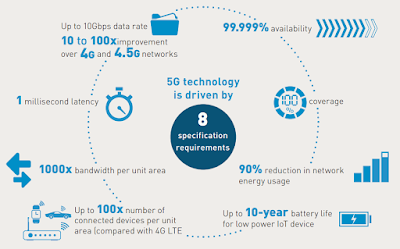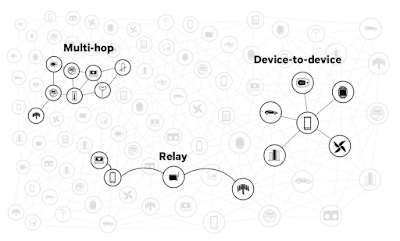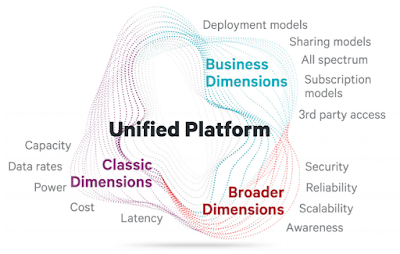The next gen wireless communication is lot more than smart phones - It's all about smart and connected things! Smart homes, smart speakers, connected cars and smart-connected machines are the major applications of 5G communication.
The world communication is now running on 4G. Most of the application of the present 4G technology is restricted up to smartphones. However, there are other application, where 4G plays a prominent role in communication. The next generation of communication technology - 5G is going to blur the boundaries. 5G will find its applications across different fields. There are several companies working and researching on 5G, which is expected to be available by 2020.
Qualcomm is working on
Connected Smart Homes and
Smart Speakers. But, there are several challenges Qualcomm is facing in these implementations. When different devices are connected among eachother, the data transfer between these devices is very high. These high data transfer requirements are not yet met by 4G. Imagine the requirement of data on a whole. According to the research by
Data Age 2025, we will be producing 163 Zettabytes of data by 2025! On the other hand, the technologies like IoT and Artificial Intelligence require still more data transfer. Is 5G going to serve all these data needs? YES! Here are the three characteristics of 5G wireless communications.
 |
| Characteristics of 5G |
Scalability and Adaptability:
5G communication will be scalable across wide range of applications. The fiber-like broadband everywhere services, being the most common service and the controlling power to the power grids, being a critical service are the two extreme scalabilities of 5G communication. The 5G technology is adaptable. It can be adapted to most simple applications like mobile communication and the extreme applications like Artificial Intelligence.
 |
| Illustration of Scalability and Adaptability |
User Centric Design:
Latency creeps into the network when billions of devices are connected. User Centric design means that not just keeping a user connected to the network, but also bringing computing and content close to the user.
 |
| User-centric design |
With 5G technology, devices will not act as the endpoints of communication. 5G communication enables connectivity to the things around a user. Device-to-device connectivity, multi-hop connectivity and relaying keep the user to communication among and across wide range of devices, efficiently. With 5G, all the networks become distribute and virtualized.
 |
| Connectivity through 5G |
Unified platform for better connectivity:
5G communication services as a platform that connects devices across all types of spectrum and bands.
 |
| Unified platform for better connectivity |
In simple words, 5G communication can service different dimension of connectivity needs. It serves business dimension, where spectrum and band related are major concern. It serves the broader dimension, where security, reliability and scalability are major concerns. It also serves the classic dimension, where capacity, data rates, power and cost are major concerns.
 |
| Critical Communications use cases of 5G |
Read more: What is 5G communication up to?

















0 comments:
Post a Comment